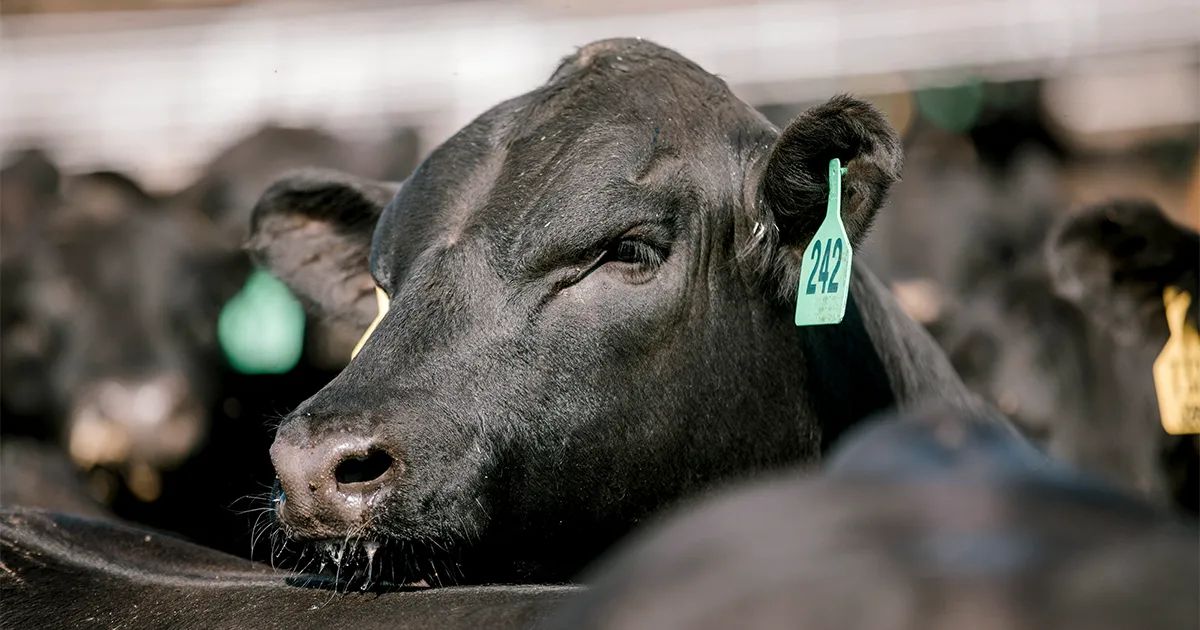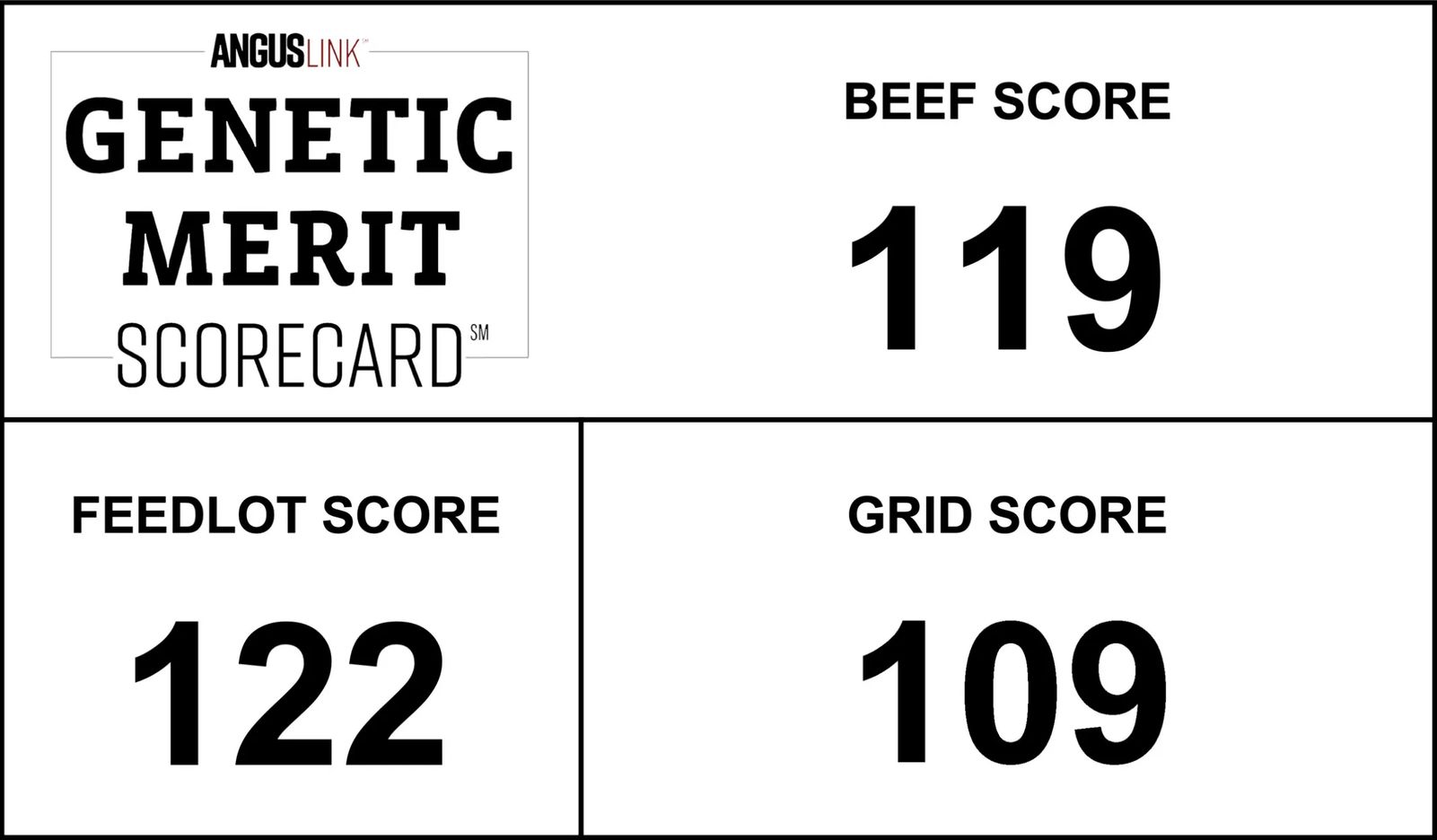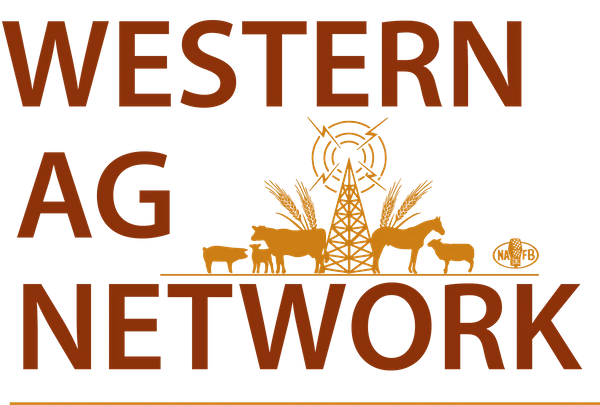
National Beef USPB Reflect on First Year of Genetics-Based Grid Premiums
August 7, 2025
There’s a first for everything, and for the first time producers earned premiums on the U.S. Premium Beef, LLC (USPB) Kansas grid based on the genetic merit of their cattle, starting in August 2024. One year later, the Genetic Merit Scorecard℠ (GMS) remains the measuring stick for these National Beef Packing Co., LLC (NBP) premiums on the USPB grid.
“It’s predictable, consistent quality,” said Chad Barker, vice president of cattle procurement with NBP. He adds that the GMS allows them to forecast and sell that quality with some confidence, because of the predictive power of the tool.
“For us, this year’s been more about validating what we expected from a performance perspective, and does it line up with our value-added business; and it does,” Barker said. “To me, those things are both really positive. That makes it sustainable, and this program will probably continue to evolve as we learn and know more moving forward.”
The GMS is one of the AngusLink℠ value-added programs administered by the American Angus Association® in partnership with IMI Global and Where Food Comes From, and it objectively describes performance potential across four areas using a range from 0 to 200, with the industry average being 100.
The GMS Beef Score specifically predicts genetic potential for feedlot performance and carcass value and is calculated using the Association database and genetic information on sires and the cow herd. For producers and feeders, cattle harvested August 5, 2024 and later with a Beef Score of 100 or greater on the AngusLink℠ GMS can earn a grid premium of $5 per head. In December 2024, a second grid premium – $10 per head for cattle with a GMS Beef Score of 150 or greater – took effect, while those scoring 100-149 continued to receive the $5 per head premium.
These premiums have been in addition to all other premiums and discounts available based on grading and carcass performance and are exclusively available for cattle marketed through USPB and delivered to NBP plant locations in Liberal and Dodge City, Kansas.

Predictable performance
Barker says NBP has been pleased with the quality of cattle qualifying for these premiums.
“I think all but maybe four pens have been really high prime,” he said. “That’s something we would not be able to sort out or find without the scorecard.”
Troy Marshall, director of commercial industry relations with the Association, said the cattle going into the program have been extremely good, averaging close to 150 for their GMS Beef Score.
Brian Bertelsen, USPB vice president of field operations, explained the cattle with a GMS going through the USPB grid have been well-above average. Looking at data from August 2024 through mid-February 2025, over 44% have been Prime. The average for the industry is 11% Prime.
These qualifying cattle have averaged more than $200 per head premium over selling in the cash market, Bertelsen said. As a reference, the non-GMS or USPB average premium during the same period was a little over $100 more than if those cattle were marketed on the average cash, live market in Kansas.
Bertelsen shared that overall, these cattle have excelled in all areas except for Yield Grade 4s and 5s, with those being higher than average for the USPB grid. Their average live weight was close to 100 lbs. higher than all other USPB cattle.
“The better your genetics are for marbling, the longer you probably ought to feed them to let them do what you designed them to do,” he said.
Barker says the traceability component of this is something they like, but it’s also something that has not fully developed yet.
“We like being able to share and make progress and make improvements,” Barker said. “We just have to find out what’s an effective mechanism for sharing and communicating it.”
Room to grow
At the one-year mark, Barker said the main challenge is getting enough volume consistently. Since January 2025, the number of cattle with the GMS being harvested at NBP has increased compared to the first several months of the program, but there is room and demand for more cattle.
“As long as we can continue to show a little incremental margin, we’re going to be committed to growing it, and we know most good things take time,” Barker said.
To qualify for the GMS, calves’ sires must be predominantly (50% or more) registered Angus and 75% of the bull battery must be registered.
“I know the guys that feed them like them,” Barker said about AngusLink cattle. “Then they bring a pretty big grid return.”
Marisa Kleysteuber, managing partner of Triangle H near Garden City, Kansas, estimates between half to two-thirds of the cattle at their feedyard are enrolled in AngusLink, and 50% of those are customer cattle. The rest are owned by Triangle H and K Ranch. Most of the cattle fed attheir yard are marketed on the USPB grid.
“The GMS AngusLink program definitely rewards producers for producing high-quality beef,” she said. “Our focus is the consumer and producing what the consumer wants; and they’ve clearly said they want high-quality beef. I think it’s exciting that there’s another program out there that is rewarding the cow-calf producers for their willingness to focus on high performance, quality cattle.”
Tracking cattle with the GMS to earn grid premiums, “it makes it a little more challenging, and we’ve had to adjust our management some with how we’d typically sort our cattle,” she said. Other adaptations have included making sure all AngusLink certificate numbers are listed on the showlist for National Beef and providing that information two weeks ahead of harvest instead of one.
“This is just another way to send the market signals, and every dollar helps,” Kleysteuber said.
Who’s participating?
Before these grid premiums were added, people retaining ownership of their cattle through the feeding phase did not have much incentive to enroll in the GMS program outside of benchmarking their genetic progress.
“They now have a financial incentive,” said Doug Stanton, senior vice president of sales and business development at IMI Global. “They can see in the US Premium Beef grid that they can earn an additional $5 or $10 a head based on their Genetic Merit Scorecard on the Beef Score specifically. In most cases it’s been eye-opening for them from the standpoint that cattle were maybe better than they thought they were.”
Many of those who earned premiums this past year have been those already comfortable with marketing cattle on the USPB grid or retained ownership.
“It’s really nice that those people can get a little bit more premium, a little bit more recognition,” said Bertelsen. “We can even better identify them in our data and recognize them with the higher premiums for the cattle that are truly genetically designed for our system.”
Stanton said he anticipates new participation coming through USPB members buying cattle with the GMS, placing them in a USPB yard and then delivering them to NBP. Bertelsen agrees and adds that more will also participate during the second year simply because they will have heard more about it.
“Moving forward, we sure hope that more cattle feeders and feedlots will step out and buy AngusLink GMS-enrolled feeder cattle to really boost the volume of cattle,” Bertelsen said. “The grid system really works. If you offer a carrot – in other words, a premium for the producer – at least some of them will chase that and achieve it.”
Bertelsen recognizes it is a challenging time to ask feeders to do that, given the current cattle supply.
“They certainly know and appreciate that genetics makes a difference,” he said. “If the record-high prices of feeder cattle postpone their stepping out and buying these cattle, that’ll change. This cattle cycle will come around eventually.”
For those ready to take the next step, he said he is quick to remind producers that the process of enrolling and getting a GMS for cattle is pretty easy.
“You don’t have to have an onsite audit,” he said. “You just need to send the birth dates, the registration numbers (for sires), and a description of the cow herd.”
There is no additional cost associated with the GMS program, aside from IMI Global’s Age and Source verification enrollment, which includes an EID tag. Plus, for cattle marketed on the USPB grid, a $1 per head premium is paid for each low-frequency EID tag that is read and assigned to a carcass ID number within each lot.
When available, feeders can lease USPB delivery rights to market cattle through USPB on the Kansas grid. Those interested should call USPB at 866-877-2525 or visit www.uspb.com for more information.
“As we see more and more acceptance of the scorecard as a valuable tool for describing cattle’s genetic merit in the marketplace, I know we’ll see this program progress,” Marshall said. “There’s tremendous value in better understanding the genetics of cattle in our industry, and this has just added to the momentum we see for rewarding the good work producers are already doing.”
For questions about the GMS or AngusVerified℠, call 816-383-5100, or contact AngusLink℠ via email at anguslink@angus.org. IMI Global can also be reached to help start an enrollment at 303-895-3002, or producers can complete its contact form to get started at www.imiglobal.com/contact.
Source: American Angus Association










